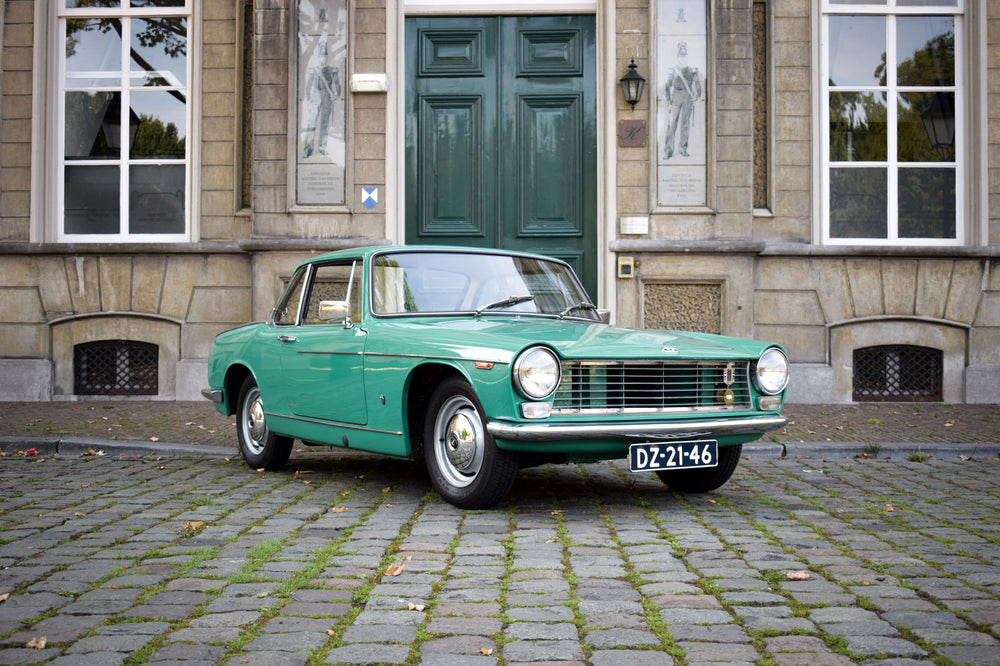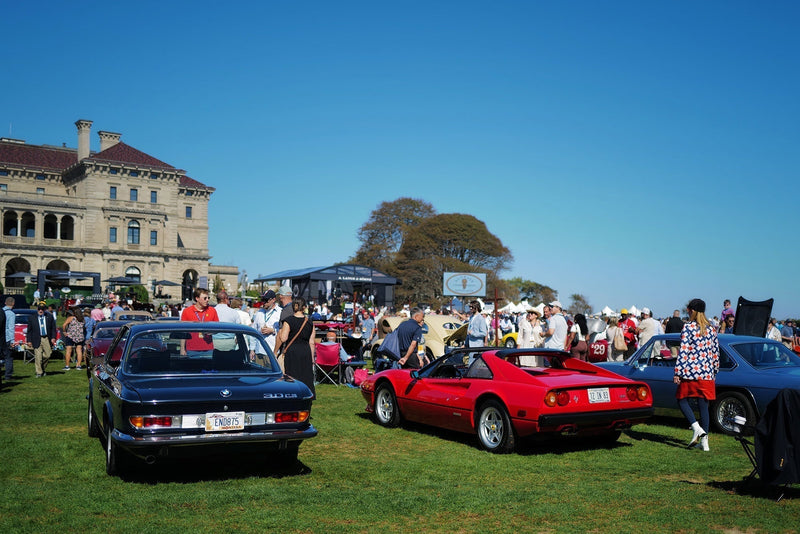At this moment, my favorite classic cars are simply too expensive, and Maserati 3500 GT and E-Type series 1 coupe prices aren’t likely to fall much in the near future. Though I have yet to attain one of my dreams, there are still plenty of candidates to satisfy some of the same requirements, and the Innocenti Coupe captures 1960s sports car style without paying full price for it.



The story of this car began, for me at least, while I was searching classifieds and forums for something Italian last year. That’s when I came across a little green two-door called an Innocenti. I knew the brand vaguely from their history assembling MINIs in the ‘60s and ‘70s, but I confess to knowing little about their other vehicles at the time. What I did know was I was smitten with the Coupe; this was a car that I’d never seen before that moment, and I was immediately captivated by its form and its DNA. See, the Innocenti is a blend of continental Great Britain and Italy, as underneath the Italian bodywork (the Spider version was Tom Tjaarda’s first designs at Ghia, and Sergio Sartorelli is responsible for the coupe that followed) lies an Austin-Healey Sprite (recall the Innocenti-BMC cooperation on MINI production that was occurring at this time). This mixture appealed to me, and it was from the era I was interested in and totally looked the part, so I gave the owners a call.




A father and son from Belgium had taken care of it for almost 15 years, and were ready to pass it along to someone else. Unfortunately, they didn’t have a whole lot of information about this example’s history (only 487 were built), but while I was definitely disappointed by the gaps in the paperwork, I had my mind pretty much made up already that I was going to be this car’s new owner. This was all happening last summer, and following a few phone calls and a quick trip to Belgium (I live in the Netherlands) to purchase the car after checking it out in person, it was now mine and on its way to my garage. Interestingly enough, it was after I purchased the car that I learned the first real bit of its backstory; upon returning the Belgian plates, I received a small envelope with some documents from the Innocenti’s early years. Apparently it was owned by a family named Reine in the early ‘70s, so now I at least have some new people to talk to in my pursuit.






In the meantime though I am thoroughly enjoying the drive. In my opinion, the look and presence of the car is clearly Italian, but once its in motion it’s all English. It even smells like an English car. This smell is hard for me to describe, but it hits even before any combustion’s taken place. It’s just a blend of skai and glue and metal, but the specific scent conjures up rain-slicked cobblestones and plumes of a car’s warm-up vapor wafting into a grey sky pierced by Big Ben.
Outside though is pure Italy, and fittingly, the Innocenti Coupe was only offered in the colors of the Italian flag. I am lucky to have found one in green, which is my favorite of the three, and especially so given the rarity of these cars in any hue—I am sure that there is one in North America, one in Austria and one in the Netherlands, but beyond those and a handful of others it seems that many of them have disappeared in some form or another, something I think about often when getting in mine for a drive.









The car is very low, so stepping into seems kind of like falling into it, but it’s not uncomfortable or awkward to do so; it’s more like easing into a nice chair. The Sprite floorpans were modified so the Innocenti’s seating position could be improved, and the extra space is quickly evident and much appreciated. The car is also wider than the base Sprite’s dimensions, so the typical knocking of elbows with your passenger happens less than you’d expect in a compact little car like this. The ergonomics are also enhanced by way of the chopstick-thin pillars (and likely as strong in the case of collision…), which allow even more field of vision out of the upright windscreen.
Once you’ve adjusted a bit and hunkered down into the surprisingly comfortable seat you’ll notice the no-nonsense dash layout, including the practical gauges laid out in an easily viewed spread across the instrument panel. I always get a kick out of the fact that the Veglia gauges in here can also be found in Ferraris of the period. Surprisingly, especially for an Italian body built on an existing chassis, the doors and hood and trunk all close with confidence-inducing clunks and show off some respectable shut lines too.





So, the actual driving experience. It seems like the motor—a BMC A-series four-cylinder with about 60hp—has a split personality, being at times modest and others rudely, joyfully, not. When you’re just moving through the gears in the lower rev range it’s just a quiet classic car to putter around in, but if you delay your shifts and let it climb it answers you with a nice little growl of approval. The gears aren’t very tall even though it’s a four-speed, so can still play around in the top of the tach pretty easily on the fun roads too. And when you see some corners ahead, you don't need to shy away. Now, I have no airs about this being able to keep up with some taut and modern sports cars, but given the age and design of the suspension system, it’s quite fun to lean it back and forth through some esses or bend it around some hairpins; though I never drive this car aggressively given its rarity and my chances of finding another, it is still quite a good time to take it on directionless drives.
Everybody seems to like the look of the car too. People are always trying to guess the marque when they see it, asking questions about the interesting little coupe. People like the paint color, the shape and the sound, are always trying to take pictures of it in traffic or parked, and I often have people driving next to me only to give a thumbs up at the next traffic stop—although it’s an innocent car, it gets a lot of attention!






















































